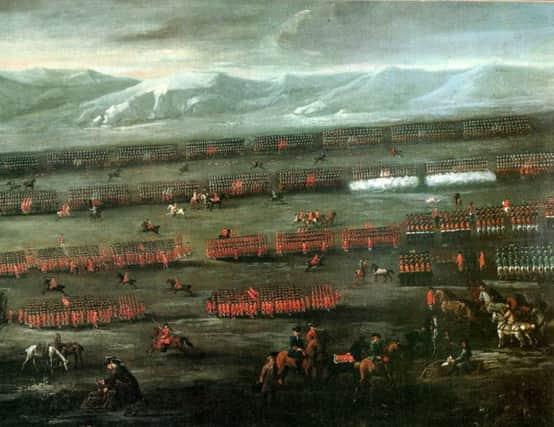On this day 1715: The second Jacobite rising begins


John Erskine, 11th Earl of Mar, travelled from London to his family lands in Deeside to muster support for the rebellion.
A shrewd political operator who twice served as the Secretary of State for Scotland, Mar vowed to lead the rising after being unceremoniously dumped from office by George I, who reigned from August 14 1714.
Advertisement
Hide AdMar sought revenge and headed home to declare James VIII and III, the Old Pretender, the true King of Scotland, England and Ireland.
The 1715 rising is generally considered the second of the Jacobite risings, with the first launched in 1689.
Accounts of that historic meeting at Kirkmichael near Braemar describe a breezy day, with a gust of wind knocking the ornamental globe off the top of the newly made standard as the Earl of Mar unfurled the flag.
The hitch in proceedings was viewed as bad omen by some but it was too late - support for the rising was great and commitment deep.
Disaffection with the 1707 Act of Union is regarded as the major driver of support for the rising.
Mar’s declaration for James VIII and III signalled a U-turn for the politician, whose family supported the Glorious Revolution of 1688-9 and the deposition of James VII - the father of the Old Pretender.
Advertisement
Hide AdBraemar Castle, the family seat, was burnt down by Jacobites as a result.
But Mar was a man familiar with defections and changes of heart.
Advertisement
Hide AdIn 1696, he joined the Whigs but switched to the Tories in 1704 when they seized power. As the Tories fell and the Whigs ruled once again, it wasn’t long before he was back in the fold of his old party.
At that point, he became particularly zealous in promoting its policies and presented in parliament a draught Treaty of Union in 1705.
But following 1707 and as the union was met with an unprecedented backlash on the streets, he went on to speak strongly in favour of its dissolution.
His political chicanery soon came to an end with his “abrupt and unceremonious dismissal from office” by George I.
The Earl of Mar sought revenge but, as ever, he managed to maintain his affable demeanour to the powerful around him.
Indeed, on the eve of Mar’s departure for Scotland, he appeared in the presence of the King with “all the complaisance of a courtier,” according to Browne’s History of the Highlands.
Advertisement
Hide AdIn late August, he summoned an impressive rollcall of Jacobite nobles to Deeside under the guise of a hunting party to hear his case for rebellion.
Mar expressed sorrow for pursuing the union before telling his guests he “clearly perceived the error he had committed and that he would therefore do everything in his power to make his countrymen again a free people,” according to Browne’s account.
Advertisement
Hide AdAs support swelled for Mar at the meeting, a natural bowl carved into the rock at the Linn of Quoich was filled with brandy or whisky. From here, the men drank - and toasted the rising to come.
To this day the ‘Earl of Mars punchbowl’ can still be seen.
Meanwhile, the government set about strengthening its military forces in Scotland.
During 1715, The Riot Act was brought out in response to the threat of unrest and the Habeus Corpus Act was suspended. Meanwhile, a reward was offered for the capture of the Old Pretender.
Mar’s rising was successful in the first instance, with Inverness, Aberdeen and Dundee captured to the Jacobites. Perth was also taken with an army of around 12,000 men.
But his military leadership was regarded as weak with the opportunity to dodge the Duke of Argyll’s forces and link up with Jacobites in the North of England regarded as a key failure of the rising.
The Battle of Sheriffmuir in November 1715 was an inconclusive encounter, despite a far greater Jacobite force on the battlefield, with Mar’s men demoralised at its outcome.
Advertisement
Hide AdThe Old Pretender arrived in Peterhead in December but, weakened with illness, his presence in Scotland was not enough to swell enthusiasm.
Jacobites were seized in the north of England and in Inverness and the rising fell apart. Mar was held for high treason and was exiled to France. His land and titles were stripped.
It was another 30 years until Bonnie Prince Charlie, the son of the Old Pretender, arrived in Scotland to continue the campaign to return the Stuart line to the throne.
